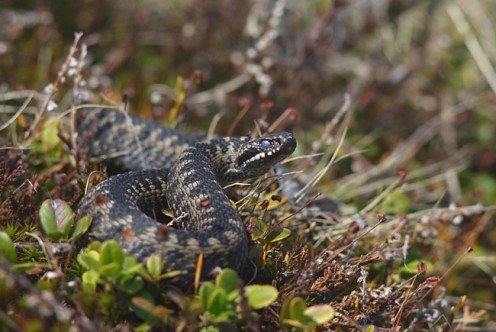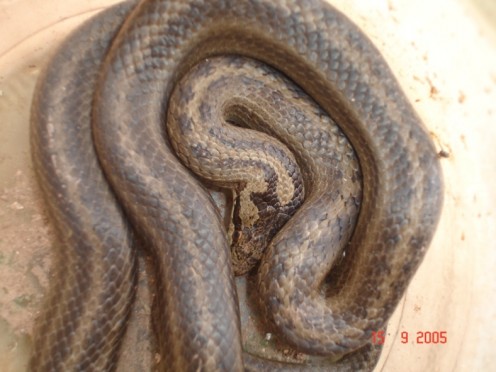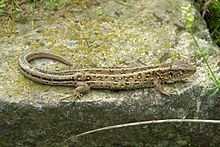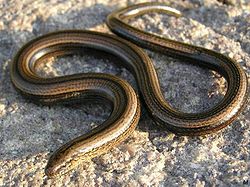Wild reptiles found in Great Britain - native lizards and snakes of the UK
Great Britain has a small but interesting population of reptiles, consisting of only three species of snake and three species of lizard. Natural habitat for these fascinating creatures is always under threat as heaths and moors are swallowed up by housing developments or farmland, so it is important to highlight these beautiful and unique creatures and to recognise the need to preserve their habitats to make sure they are not lost forever.


Snakes
The three snakes found in Britain are the adder, the grass snake and the smooth snake.
The adder (Viper berus) is the only venomous snake, and the only creature with a deadly poison in the British Isles. It is easily recognisable by the zig-zag pattern down its back, usually black and white but also sometimes brown and white. They are a fairly small snake, rarely growing to more than about 90 cm (36 inches) in length. They use their venomous bite to immobilise their prey, and rarely bite humans unless they are disturbed or feel threatened. It takes a few hours before the poison takes full effect - usually enough time to get to a hospital for some anti-venom, and the bites are rarely fatal. In fact, the last known fatality from an adder's bite in Britain was in 1975. It is quite widespread, and can survive in a variety of habitats, including grassland, heaths and forests.
Grass snakes (Natrix natrix) are the country's largest snakes, sometimes reaching up to 2 metres (6 ft) long. They are greenish in colour, with yellow markings around the neck, and are often seen near water or swimming in ponds or lakes where they eat small amphibians and fish. They are the only British snake to lay eggs, whereas the others give birth to live young.
The smooth snake (Coronella austriaca) is the rarest of the three, and only found in southern England in heathland areas which are becoming increasingly rare and isolated habitats, making it difficult for smooth snakes to increase their distribution. It is a small slender snake, growing to only around 60 cm (2 ft) in length, and is mottled grey or brown in colour. It is a constricting snake that preys on small mammals and reptiles, which it crushes and then swallows whole.
Lizards

The three types of British lizard are the common lizard, the sand lizard and the slow-worm.
Common lizards (Zootoca vivipara) are, as the name suggests, the most commonly seen lizard in Britain. They are small and usually brown or grey, growing up to 12 cm (5 inches). When fully grown the tail will be longer than the body, but if caught by predators they have the ability to break off their tails, so they are often seen with broken or missing tails, although they do eventually grow back.
Sand lizards (Lacerta agilis) are a little larger, and roughly the same shape as the common lizard, but have a more striking green and yellow patterning. They too have fallen victim to the disappearing heathlands of Britain, and are now quite rare, being found only in some southern heathlands and north-eastern sand dunes.
The slow-worm (Anguis fragilis) is often mistaken for a snake or even a large worm, as it has no legs, but it is in fact a legless lizard. They have smooth skin, and are a non-descript brownish-grey colour. They are often found hiding under rocks or in cool, damp places, and feed on slugs, worms and bugs. They also have the ability to lose and regrow their tails.










